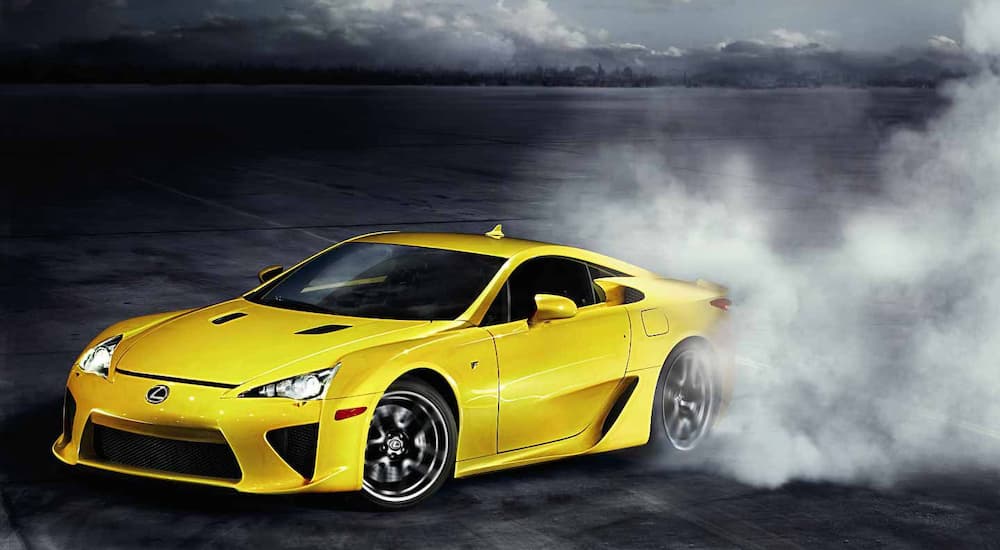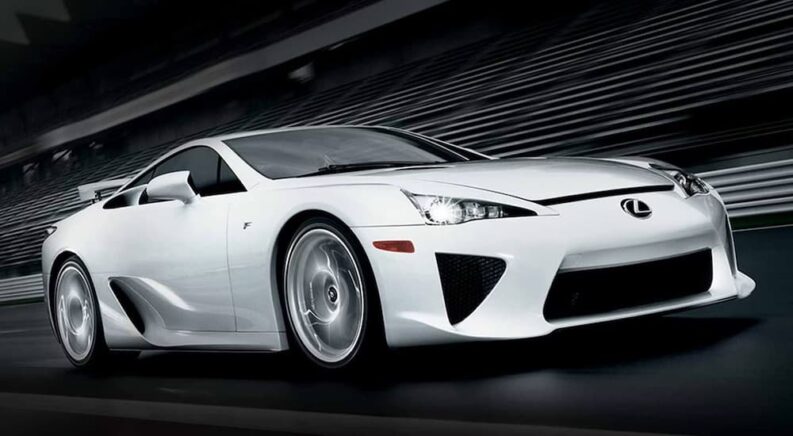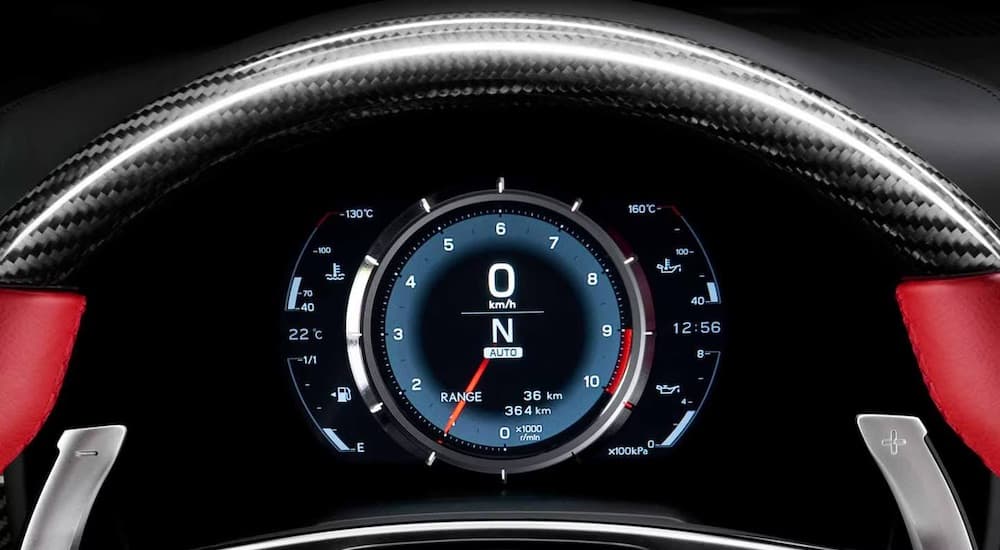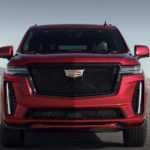Lexus is synonymous with luxury, but there’s another side to the proverbial coin beyond the premium details and opulence that await at any Lexus dealer near you. There’s the side of Lexus that’s hungry for speed, with an insatiability that’s defined the lineup for decades and inspired the Lexus Performance Driving School. We see glimpses of this insatiable need for speed in modern Lexus marvels like the LC 500 with its 471 hp V8 engine. But is that the best Lexus has to offer?
When you dive deeper into Lexus’ history in terms of performance, there’s no question the automaker has proven its chops as an industry leader. The world saw it firsthand in 2009 when Lexus debuted its first supercar, the Lexus LFA, with its $375,000 starting price to complement its 553 hp engine and a top speed of 202 mph. This supercar was a defining moment for Lexus, inspiring a progression that secured the automaker’s reputation for satiating the need for luxury and speed in one fell swoop.
The Road to the Supercar
Established in 1989 as Toyota’s luxury division, Lexus is a relatively young automotive brand but entered the industry with Toyota’s incredible reputation working in its favor. It didn’t take long for Lexus to become the best-selling luxury brand in America, a title it has held on and off ever since. Part of Lexus’ success is attributed to its forward-thinking and efforts to improve its lineup to exceed driver expectations. For Lexus, the status quo isn’t enough, and that’s the mentality that paved the road to the first-ever Lexus supercar.
In the 2000s, Lexus envisioned expanding its lineup to include more performance-oriented models to appeal to drivers with a penchant for luxury and speed neatly packaged in a premium experience behind the wheel. The automaker brought that vision to life with the Lexus F models like the 2008 IS F, but that wasn’t enough. Lexus tasked its engineers with designing a supercar that would put the world on notice. The engineers didn’t simply deliver; they knocked it out of the park with an all-new supercar built from scratch.
“From the very beginning of automobile history, supercars have represented dreams, hopes, and aspirations,” chief engineer Haruhiko Tanahashi said of the LFA’s development. “For Lexus, a brand that aims to provide customers with enlightened moments and memorable experiences, the development of a world-class supercar was an indispensable next step.”

The Thoroughbred Supercar: The $375,000 Lexus LFA
Automakers constantly look for ways to up the ante, challenging their teams to set new benchmarks of excellence to ensure their models are the best, most powerful, most innovative, and most luxurious. For many, however, that challenge must fall within specific parameters. In other words, the teams have to use what they know or what’s available and find ways to make it better. With the Lexus LFA, that wasn’t an option, and Lexus knew it, hand-selecting a small team of engineers to develop the supercar from the ground up.
A Lean Machine
The lighter the car, the better its speed and performance, which is why Lexus started from scratch when designing the LFA. Instead of relying on tried and true components, the LFA team reached beyond what they knew and spent nearly a decade mastering the use of advanced Carbon Fiber Reinforced Plastic for the chassis and bodywork. While CFRP wasn’t a new development in the new millennium, how Lexus applied it was.
The lightweight material dramatically reduces the LFA’s weight without compromising its high-strength and impact-resistant build. Most notably, the LFA team didn’t outsource the process to cut costs or streamline production. Instead, Lexus kept the production in-house to maintain quality control over every aspect of the LFA’s build. The result was incredible, likening the LFA’s chassis to the same quality of CFRP construction seen in aerospace programs.
With the chassis and bodywork using Carbon Fiber Reinforced Plastic, Lexus shaved even more weight off the LFA’s design by turning to aluminum, titanium, and magnesium components throughout the powertrain and transmission. With carbon fiber elements in the steering wheel and carbon-ceramic brake discs, the LFA shed over 220 lbs and earned supercar status with an astonishingly low curb weight of 3,260 lbs. Paired with its V10 engine, that’s a power-to-weight ratio of less than six pounds per horsepower.
The Heart of a Warrior
A thoroughbred supercar wouldn’t be complete without the heart of a warrior. Lexus knew as much, but there was a catch––the brand simply didn’t have an existing engine that would do the car justice. To remedy the problem, Lexus partnered with Yamaha to develop a bespoke 4.8L V10 engine with an astonishing 9,000 RPM redline. Yamaha’s ingenuity and experience with compact and high-revving motorcycle engines shine through with the LFA’s V10 engine, which is smaller than a typical V8 and as light as a V6.
A marvel by every standard, the V10 engine exceeds every expectation, producing 553 hp at 8,700 RPM and 354 lb-ft of torque at 7,000 RPM. With individual throttle bodies for all ten cylinders, titanium valves and connecting rods, and intelligent variable valve timing on the intake and exhaust, you get 90% of this torque between 3,700 RPM and the LFA’s 9,000 RPM redline. The result is phenomenal, launching the LFA from 0 to 60 mph in 3.6 seconds and reaching a top speed of 202 mph.
The ingenuity behind the LFA’s engine is even more impressive when you consider the V10 can rev from idle to its redline in six-tenths of a second. The secret weapon behind this capability is an innovative system known as prioritized control logic. By estimating air intake volume based on the position of the throttle pedal rather than waiting for precise measurements from sensors inside the engine, the system can more quickly calculate the amount of fuel to inject, providing instantaneous feedback.
The result is breathtaking, as Lexus pairs the V10 engine with a lightning-fast six-speed Automated Sequential Gearbox that lets the driver control the speed of the gearshift. At its fastest, the transmission shifts in as little as 0.2 seconds for optimal performance on the track, or you can stretch the Shift Speed Selection dial to 1.0 seconds when cruising at highway speeds. The selectable shift speeds complement the LFA’s four driving modes––Auto, Sport, Normal, and Wet––that further finetune the shift patterns, throttle response, and other details to match the conditions and optimize traction.
Exclusive By Design
Lexus capitalizes on exclusivity as a luxury brand, but the LFA took that exclusivity to new heights in 2010 when Lexus confirmed only 500 models would be produced. Those models started arriving on American soil in 2011 with a starting price of $375,000, each hand-assembled on the Lexus LFA Works production line in the Motomachi Plant in Toyota City. In the months following the LFA’s debut, Lexus announced its first Lexus LFA Driver Development Program to give owners more insight into the ingenuity behind the supercar by putting the LFA in its natural environment and its owners behind the wheel.
Today, the LFA remains one of the most coveted supercars ever produced and the most powerful car in Lexus history. It set a precedent for Lexus and the high-performance models that followed, such as the RC F, the IS 500, and the LC 500. These models and their successors trace their lineage to the LFA, the benchmark by which every Lexus powerhouse is measured, and rightly so.





